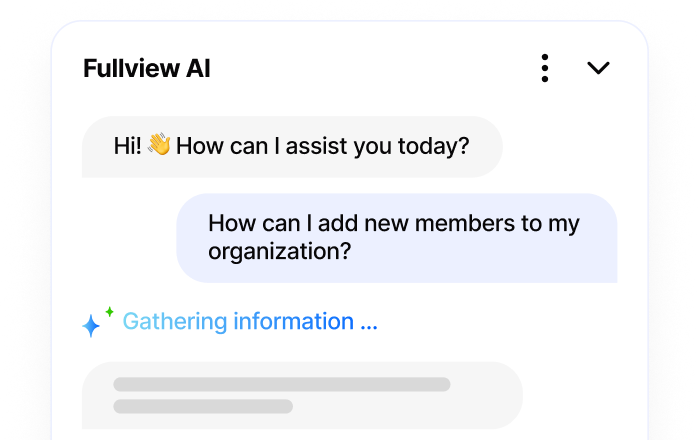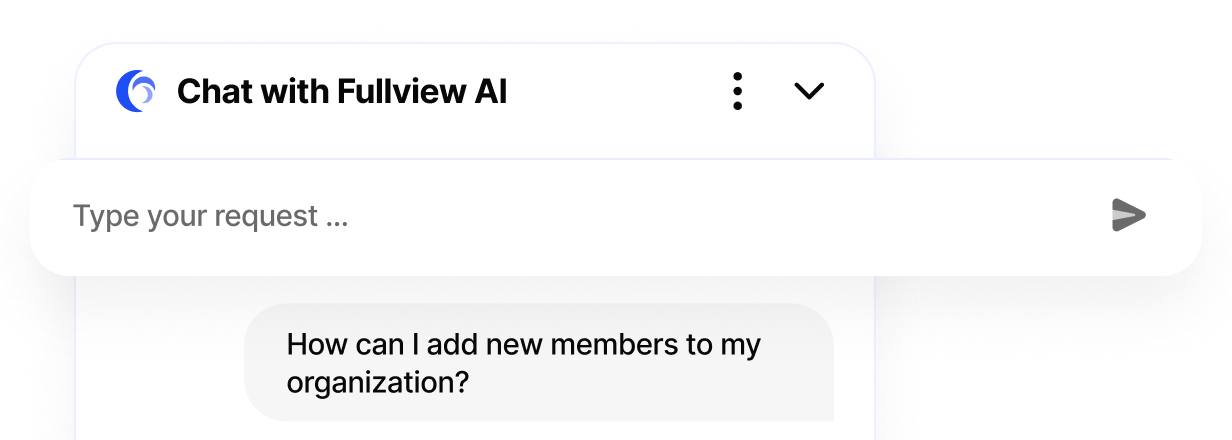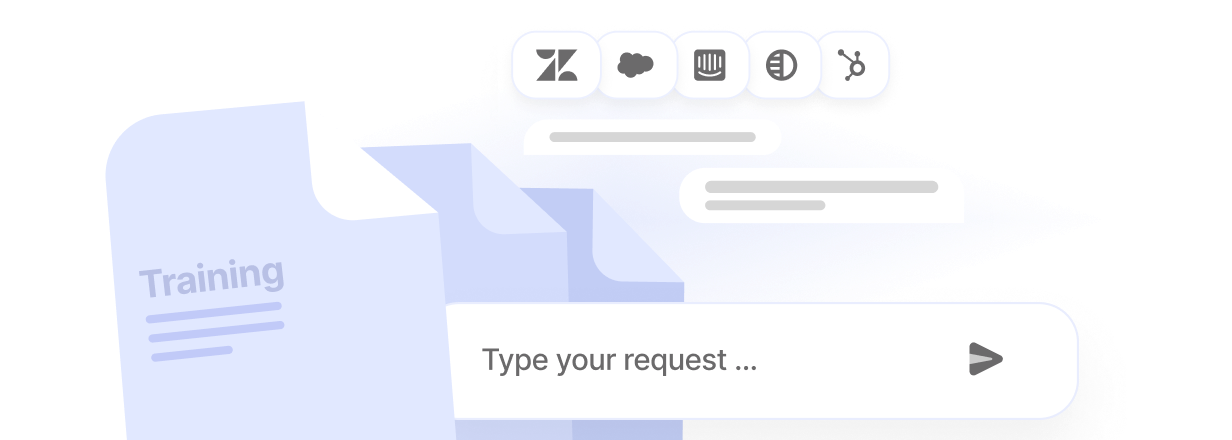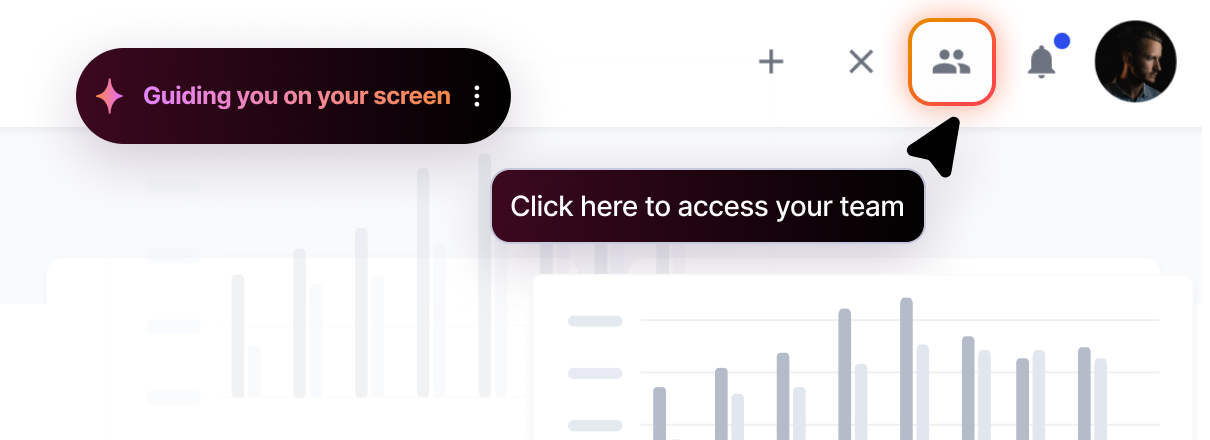Customer success has evolved from a nice-to-have support function into a $2.8 billion revenue-driving powerhouse. By 2025, 90% of organizations have dedicated customer success roles, and 52% actively integrate AI into their workflows. The results speak for themselves: properly implemented customer success software delivers 150-400% ROI.
But here's what's changed: the best customer success software in 2025 doesn't just track metrics and send automated emails. The most innovative platforms now use visual AI to guide customers through complex workflows, take actions on their behalf, and provide contextual support that actually solves problems.
Bottom line: The competitive advantage in 2025 comes from customer success software that can see what your customers see and help them succeed in real-time, not just analyze what went wrong after the fact.
What's Actually New in Customer Success Software
The customer success software market is growing at 24.73% annually, reaching a projected $16.6 billion by 2033. This isn't just about more companies buying software—it's about fundamental changes in how customer success works.
Traditional customer success platforms focused on tracking health scores and automating email sequences. Today's leading solutions use AI to provide real-time guidance, predict customer needs, and take autonomous actions to prevent churn before it happens.
The biggest shift? Visual AI that can actually see your customer's screen and provide step-by-step guidance or complete tasks for them. This isn't theoretical—it's happening right now, and it's game-changing for any company with a complex product.
AI-Powered Customer Success Software
Why this matters: 52% of customer success teams now use AI, and that number is expected to reach near-universal adoption by 2027. But there's a huge difference between AI that just sends alerts and AI that actually helps customers succeed.
Fullview AI Agent
One of the most innovative customer success AI platforms available. Unlike traditional platforms that only track customer behavior, Fullview's AI can see your application and take real actions to help customers succeed.
What sets it apart:
- Visual customer guidance: Shows customers exactly how to complete tasks, right on their screen
- Autonomous problem-solving: Can complete complex workflows like account setup or feature configuration
- Contextual support: Uses session replays and error logs to understand customer experiences
- Seamless escalation: Provides full context when human agents need to take over
Perfect for: SaaS companies, fintech, or any business where customer success depends on helping users navigate complex workflows.
Companies using visual AI for customer success typically see 40% reduction in onboarding times and 27% average churn reduction.
Want to see visual AI customer success in action? Book a demo to see how AI can guide your customers through complex workflows.
.avif)
ChurnZero Customer Success AI
ChurnZero's AI provides real-time relationship scoring, automated content generation, and predictive sentiment analysis. It's solid for traditional customer success workflows but limited to data analysis and email automation.
Best for: Mid-market SaaS companies that want AI-powered insights without changing their current workflows.
Gainsight Sally AI
Built into Gainsight's platform, Sally AI enables natural language data queries and automated workflow orchestration. Powerful for enterprise teams but requires significant setup and training.
Best for: Large enterprises already invested in the Gainsight ecosystem.
Vitally AI
Focuses on productivity and workflow automation with AI-powered health scoring and risk detection. More affordable than enterprise solutions but less sophisticated than visual AI platforms.
Best for: Growing companies that need AI insights without enterprise complexity.
Traditional Customer Success Platforms
These established platforms remain essential for comprehensive customer success operations, even as AI capabilities become more important.
Gainsight
The industry standard for enterprise customer success. Gainsight offers comprehensive analytics, advanced segmentation, and extensive integration capabilities.
Why it's popular: Proven at scale, thought leadership, comprehensive feature set. Best for: Large enterprises with dedicated customer success teams and complex needs.
Pricing: Starts around $15,000+ annually for enterprise features.
ChurnZero
Designed specifically for B2B SaaS companies with real-time analytics and in-app communication capabilities.
Strengths: SaaS-focused features, real-time data, excellent user interface. Best for: SaaS companies that want purpose-built customer success tools.
Pricing: Custom pricing, typically $500-2,000+ per month depending on features.
Totango
Offers both freemium and enterprise solutions with pre-built customer success programs and automation.
Why it works: Accessible entry point, proven templates, scales with growth. Best for: Companies wanting to start with basic customer success and grow into advanced features.
Pricing: Free tier available, paid plans start at $249/month.
Planhat
Modern platform with transparent pricing and comprehensive customer data management.
Strengths: User-friendly interface, honest pricing, strong analytics. Best for: Mid-market companies that want enterprise features without enterprise complexity.
Pricing: Quote-based, but generally more affordable than Gainsight or ChurnZero.
Specialized Customer Success Tools
Customer Onboarding & Education
Fullview AI Agent Highly effective onboarding solution for complex products. Unlike traditional onboarding tools that rely on generic tutorials, Fullview's AI provides personalized, visual guidance that adapts to each customer's specific context.
Best for: SaaS companies, fintech, or any business where successful onboarding requires navigating complex workflows.
Skilljar Established customer training platform that helps accelerate product adoption through structured learning programs.
Best for: Companies with complex products that require extensive customer education and formal training programs.
Appcues In-app guidance and user onboarding with no-code implementation and A/B testing capabilities.
Best for: SaaS companies that want to improve in-app user experience with standard onboarding flows.
Customer Health & Analytics
Vitally Modern customer success platform with productivity focus and innovative pricing based on customer engagement rather than seats.
Why it's different: Pay for customer engagement, not team size. Clean interface, fast implementation. Best for: Growing SaaS companies that want modern tooling without per-seat pricing.
CustomerGauge Specialized in account experience management with advanced NPS and customer feedback analysis.
Best for: B2B companies focused on measuring and improving customer experience at the account level.
Digital Customer Success
Pendo Product analytics and in-app guidance that helps customers discover and adopt features.
Best for: Product-led growth companies that want to improve feature adoption and reduce support tickets.
Userpilot No-code platform for creating in-app experiences that guide users to success.
Best for: SaaS companies that want to create personalized user journeys without developer resources.
The Real Numbers: What You Can Expect
Understanding actual ROI helps you set realistic goals and measure success:
Customer Success Software ROI:
- 91% ROI over three years (Forrester research)
- 150-400% annual returns for well-designed programs
- Cost to acquire $1 ACV from existing customers: $0.61 vs $1.78 for new customers
- 5% increase in retention boosts profits by 25-95%
Implementation Costs:
- Small businesses: $10,000-30,000 for basic deployment
- Mid-market: $30,000-60,000 for comprehensive setup
- Enterprise: $60,000-100,000+ including professional services
Time to Value:
- Modern platforms (Vitally, Fullview): 2-3 weeks
- Traditional enterprise solutions: 6-12 weeks
- AI-driven onboarding reduces time-to-value by 40%
These aren't theoretical numbers—they're based on actual implementations across thousands of companies.
What's Working in 2025
The hybrid approach wins: 73% of companies now use digital customer success strategies, but the most successful combine:
- AI agents for real-time guidance and automation
- Visual support tools for complex product interactions
- Human customer success managers for strategic relationships
- Self-service resources for immediate customer needs
Revenue focus is everything: 93.7% of companies measuring customer success impact use revenue targets. Your customer success software should directly tie to expansion revenue, not just satisfaction scores.
Digital-first strategies show 15% annual growth: In-app engagement, online communities, and self-service portals are replacing email-heavy approaches.
Implementation Challenges (And How to Avoid Them)
Data integration complexity affects 67% of organizations. Start with data audit and quality cleanup before implementing new software. Most failures happen because of poor data, not bad software.
Change resistance from existing teams. Get executive sponsorship early and involve customer success managers in the selection process. They need to see clear benefits, not just new tools to learn.
Skills gap in customer success expertise. Budget for training—both technical proficiency and soft skills development. Industry certifications like CCSM provide valuable career advancement for your team.
Measuring the wrong metrics. Focus on revenue impact, not activity metrics. Track expansion revenue, net revenue retention, and customer lifetime value—not just email open rates.
Common Questions About Customer Success Software
What's the difference between customer success and customer support software?
Customer support software reacts to problems after they happen. Customer success software proactively helps customers achieve their goals and prevents problems before they occur. Support focuses on tickets; success focuses on outcomes.
How long does it take to see ROI from customer success software?
Most companies see initial results within 3-6 months, with full ROI typically achieved within 12-18 months. The timeline depends on implementation quality and team adoption.
Do I need different tools for different customer segments?
Not necessarily. Modern platforms like Planhat and Vitally can handle multiple customer segments through different workflows and automation rules. However, enterprise customers might need specialized features that smaller customers don't require.
Can customer success software actually prevent churn?
Yes, but only if implemented correctly. The key is using predictive analytics to identify at-risk customers and taking proactive action. Visual AI platforms like Fullview can actually intervene in real-time to help struggling customers.
What's the minimum team size that makes sense for customer success software?
If you have more than 50 customers or $500K+ ARR, you should be thinking about customer success software. Smaller teams can start with freemium tools like Totango and upgrade as they grow.
How do I measure the success of my customer success software?
Track revenue metrics: net revenue retention, expansion revenue, and customer lifetime value. Operational metrics like time-to-value and health score improvements are important but secondary to revenue impact.
Should I buy an all-in-one platform or specialized tools?
Depends on your needs and budget. All-in-one platforms like Gainsight work well for large teams with diverse needs. Specialized tools often provide better functionality for specific use cases—like visual AI for complex product interactions.
How does AI in customer success actually work?
AI analyzes customer behavior patterns, product usage data, and communication history to predict outcomes and suggest actions. Advanced AI like Fullview's can also take autonomous actions like guiding customers through workflows or completing tasks.
What integrations are most important for customer success software?
For comprehensive platforms, CRM integration (Salesforce, HubSpot) is essential. For specialized tools, the key integrations depend on your use case—visual AI platforms like Fullview prioritize helpdesk integrations (Intercom, Zendesk) for seamless escalation. Product analytics (Mixpanel, Amplitude) and communication tools (Slack, email) are valuable for most customer success operations.
How do I get my team to actually use the new software?
Start with training and clear expectations. Show them how the software makes their job easier, not harder. Focus on wins—like faster customer onboarding or easier expansion conversations—rather than features.
Can customer success software work for non-SaaS businesses?
Absolutely. Any business with ongoing customer relationships can benefit. E-commerce, professional services, manufacturing, and healthcare all use customer success software to improve retention and drive growth.
What happens if customers don't like the new tools?
Most customer success software works behind the scenes—customers often don't interact with it directly. For tools like Fullview that provide direct customer assistance, the visual guidance typically improves rather than complicates the customer experience.
How do I calculate ROI for customer success software investment?
Compare the cost of the software (including implementation and training) against improvements in customer lifetime value, reduced churn, and increased expansion revenue. Most companies see 3-5x return within the first year.
Should I hire a customer success manager before buying software?
It depends on your customer base size. If you have 100+ customers, hire the person first—they can help select the right software. If you're smaller, software can help you scale before adding dedicated headcount.
What's the biggest mistake companies make with customer success software?
Focusing on activity metrics instead of outcome metrics. Tracking how many emails were sent doesn't matter if churn isn't decreasing. Always tie customer success activities to revenue impact.
The Bottom Line
Customer success software has evolved from spreadsheet replacement to revenue-driving AI platforms. The companies winning in 2025 aren't just tracking customer health—they're using visual AI to guide customers to success in real-time.
What's working:
- AI-powered platforms that provide autonomous customer guidance
- Visual support tools that can see and interact with your product
- Revenue-focused metrics that tie customer success directly to business growth
- Integrated ecosystems that break down silos between teams
The customer success software market is growing at 24.73% annually, driven by platforms that deliver measurable ROI. Companies that properly implement these tools see 150-400% returns through improved retention, faster expansion, and reduced support costs.
If you want to lead in customer success rather than follow, the path is clear: combine AI automation for scale, visual support for complex interactions, and human expertise for strategic relationships.
Your customers—and your revenue—will notice the difference immediately.
Ready to see how visual AI can transform your customer success? Fullview's AI agent works alongside your existing tools to provide the kind of autonomous customer guidance that actually drives results.








.webp)
